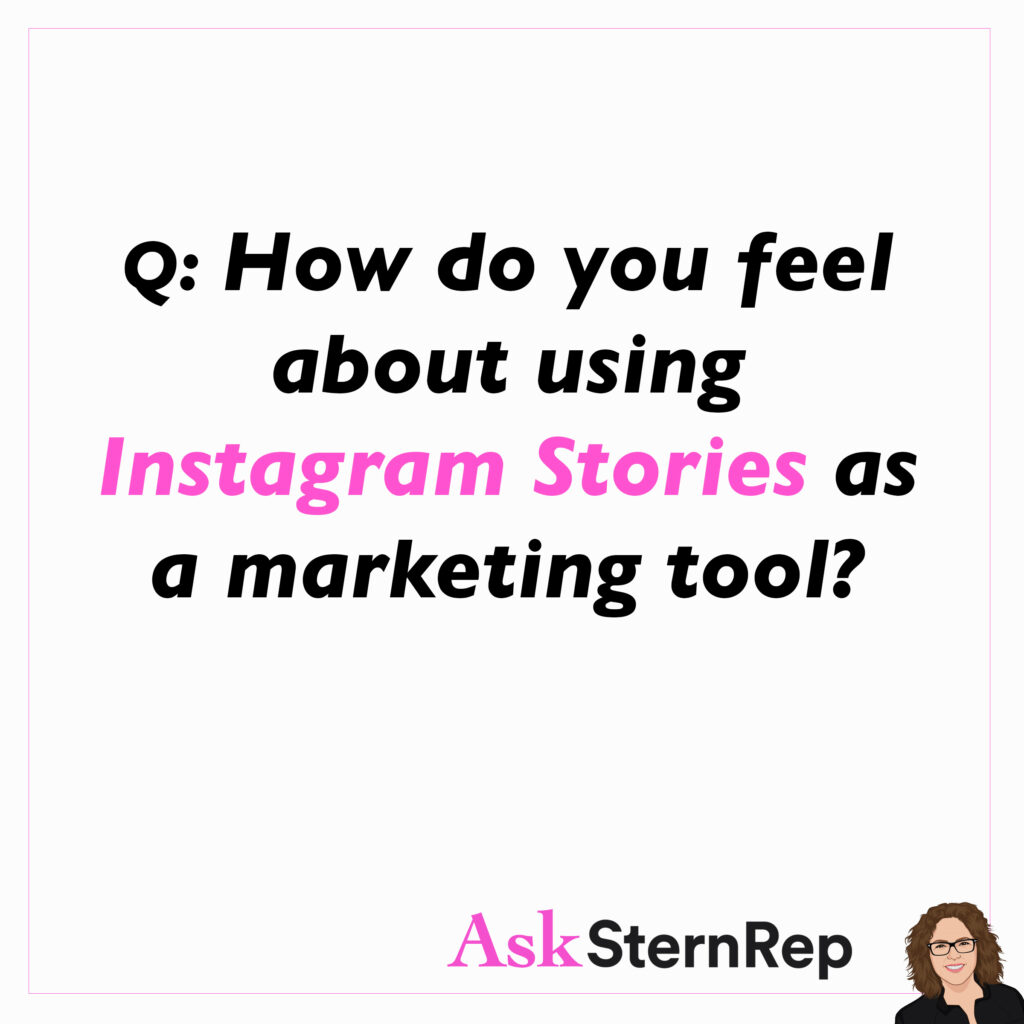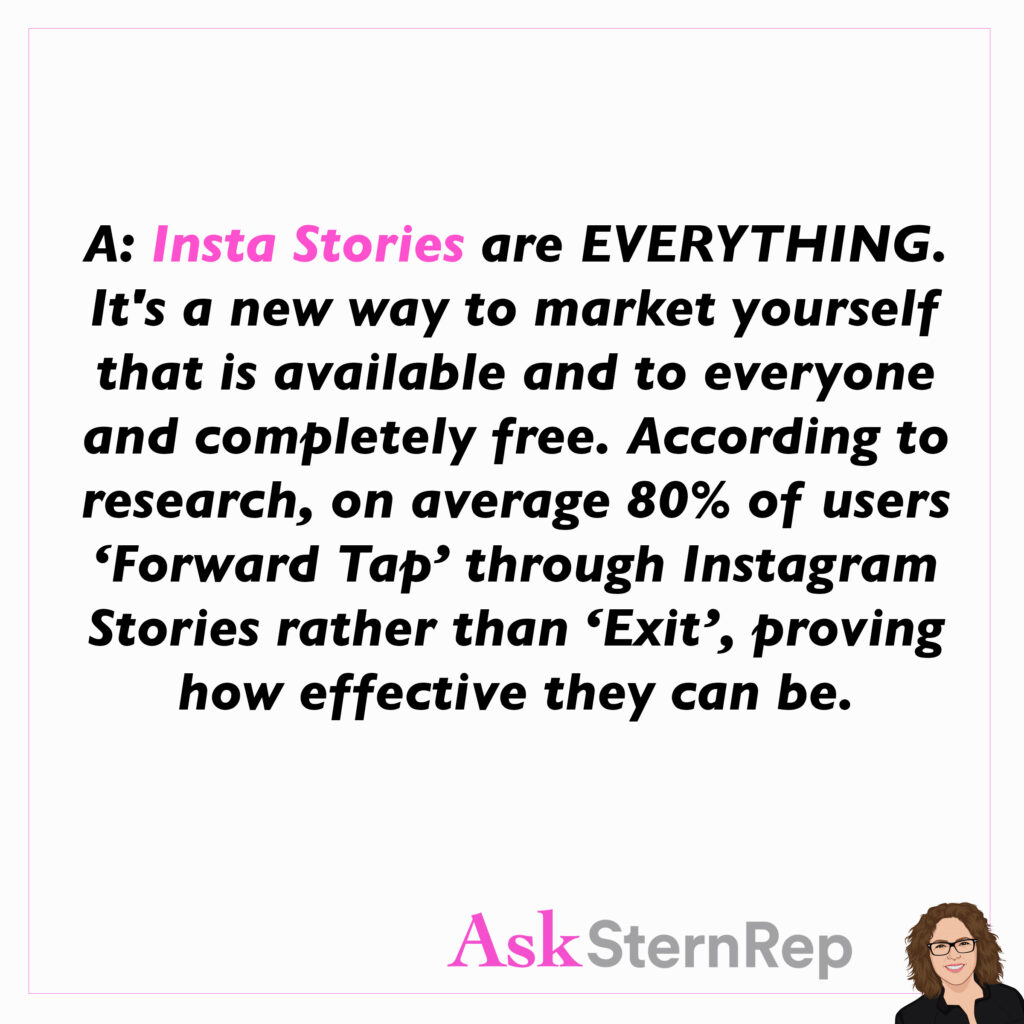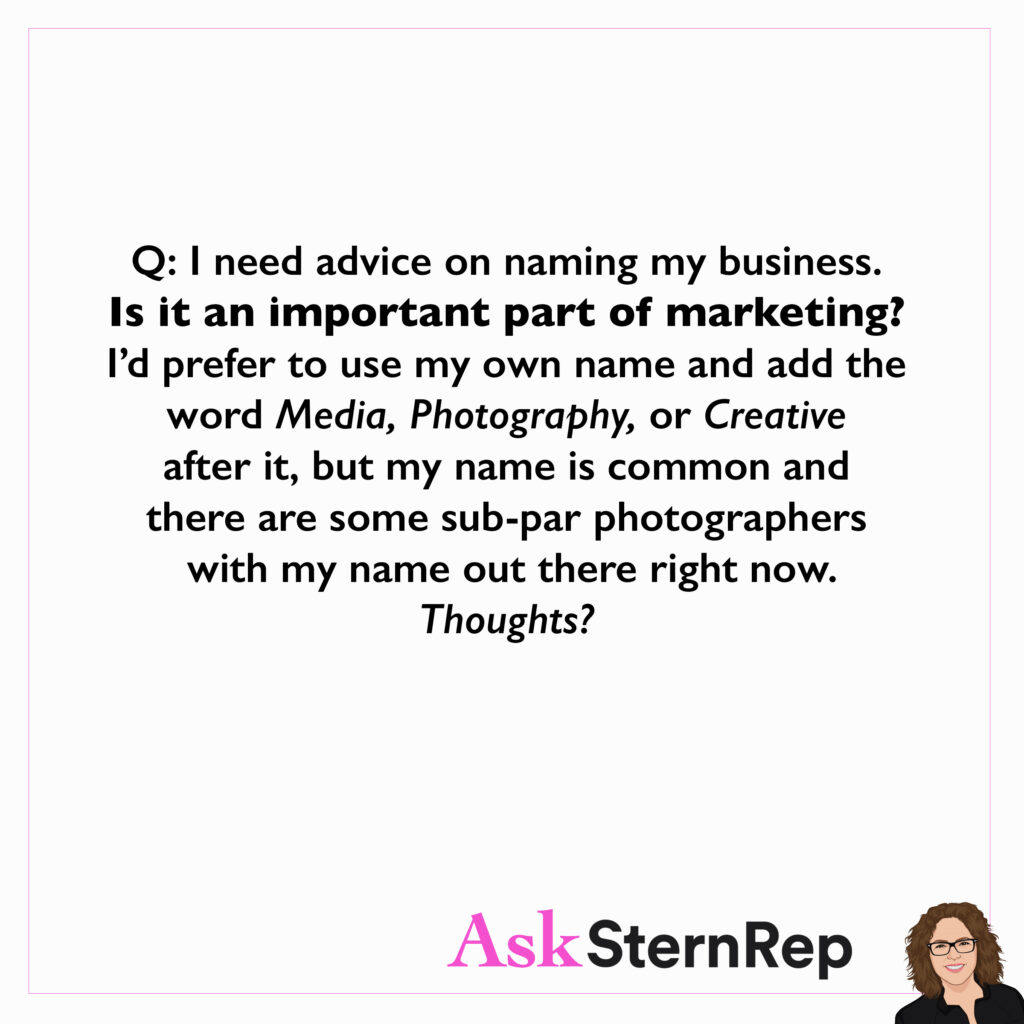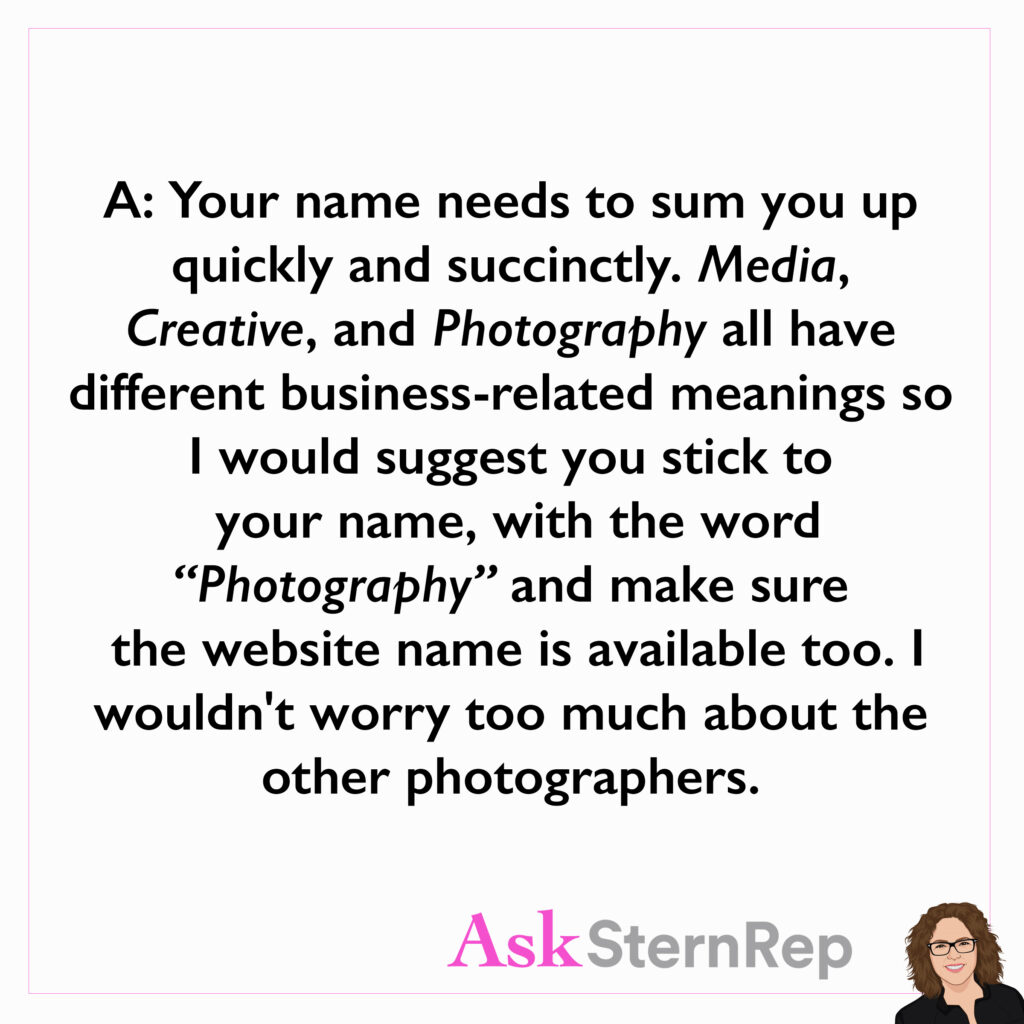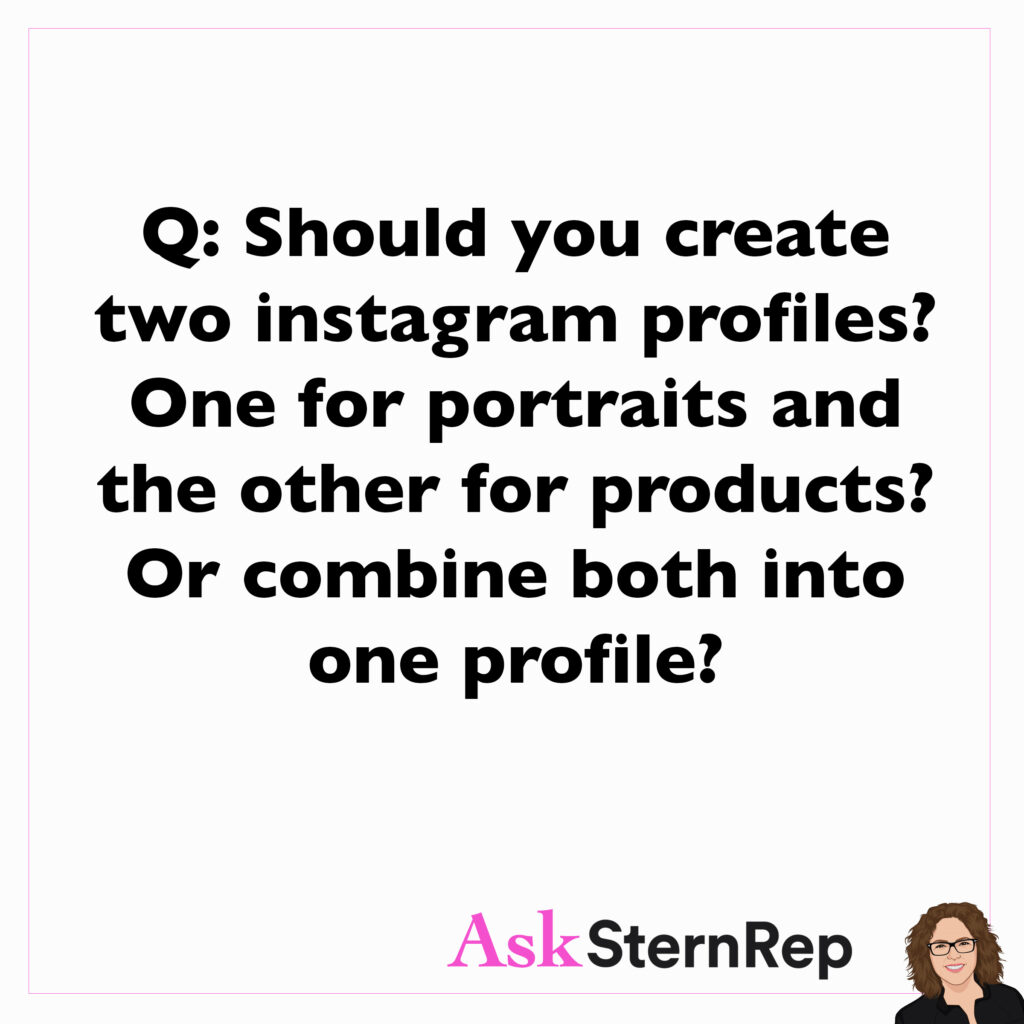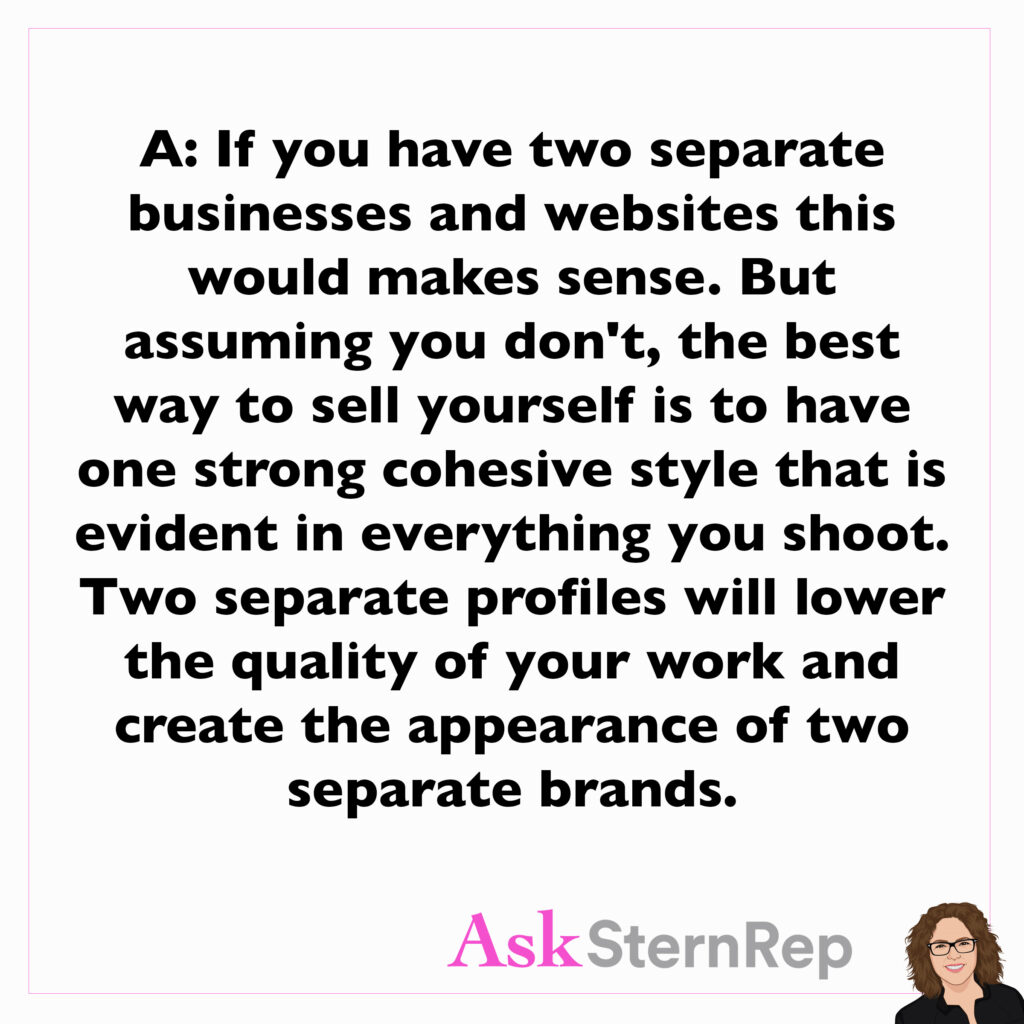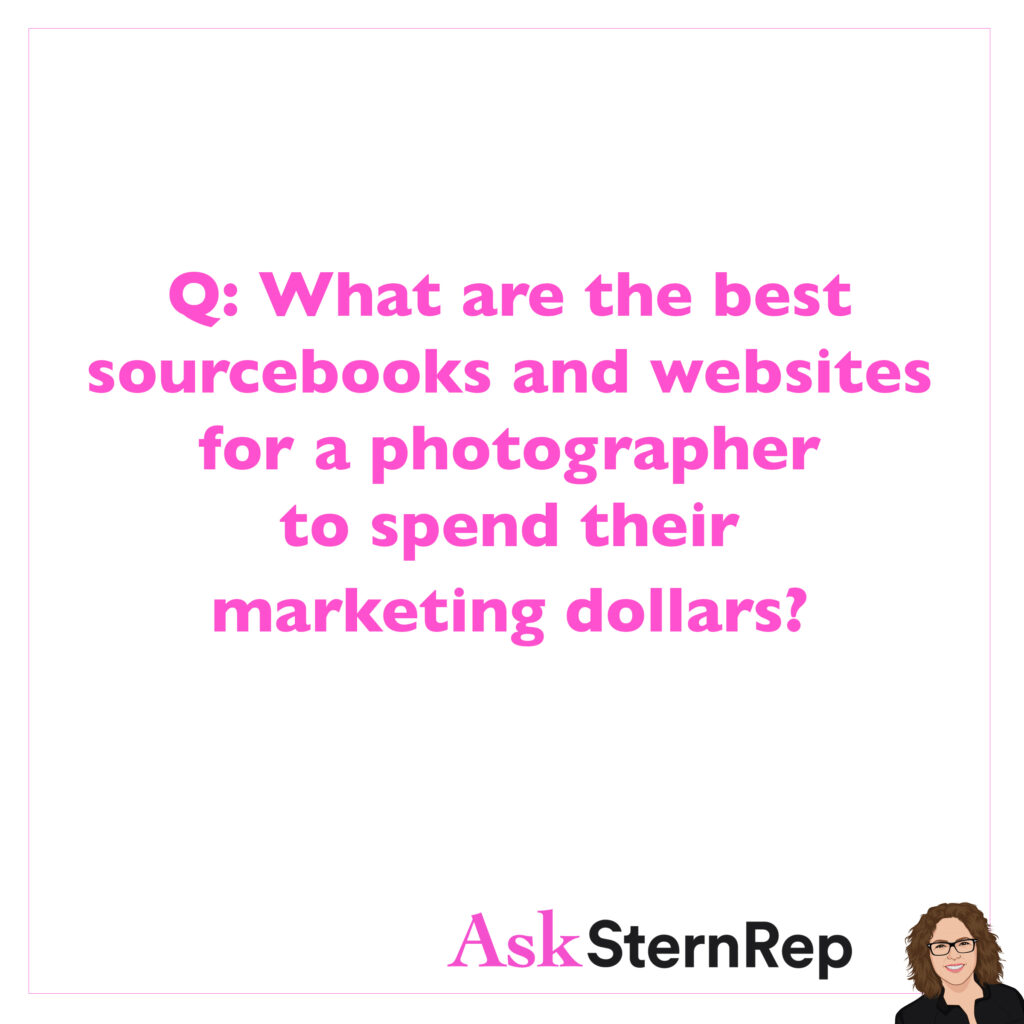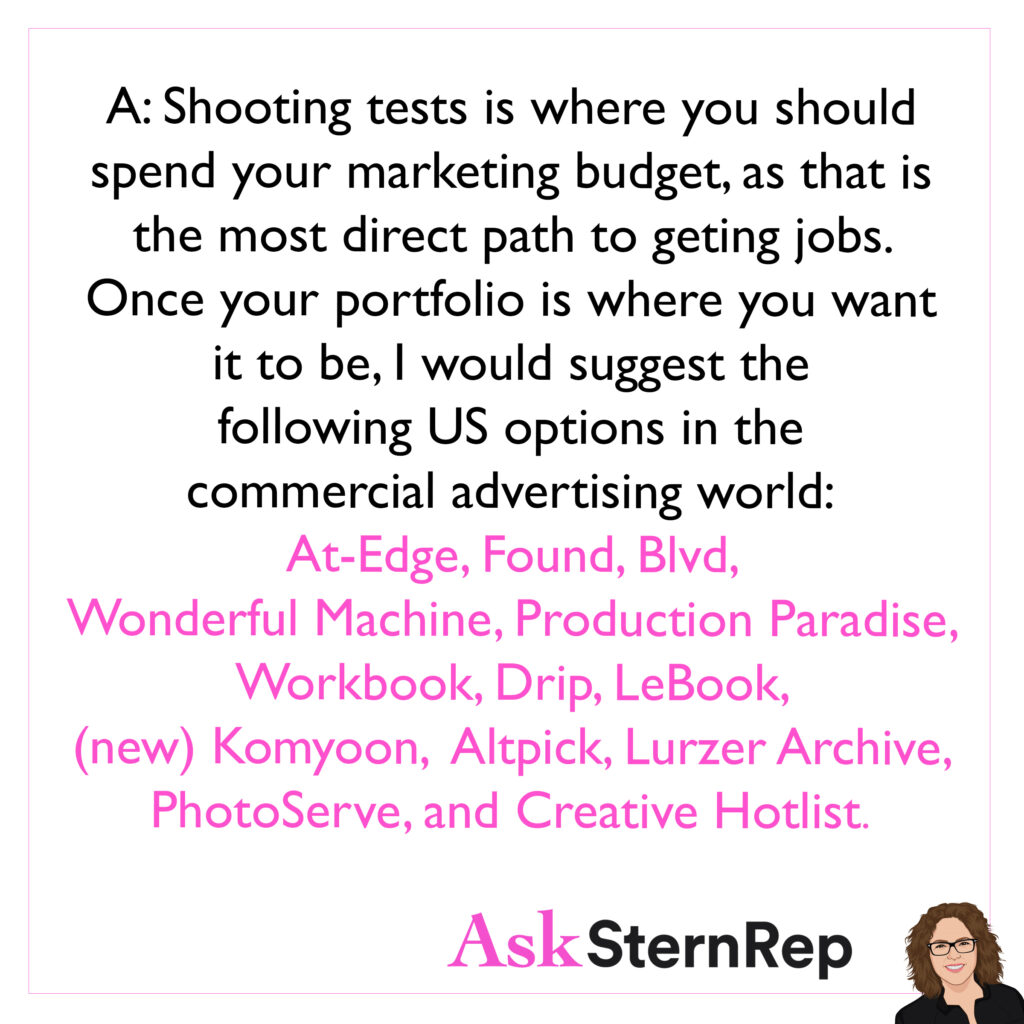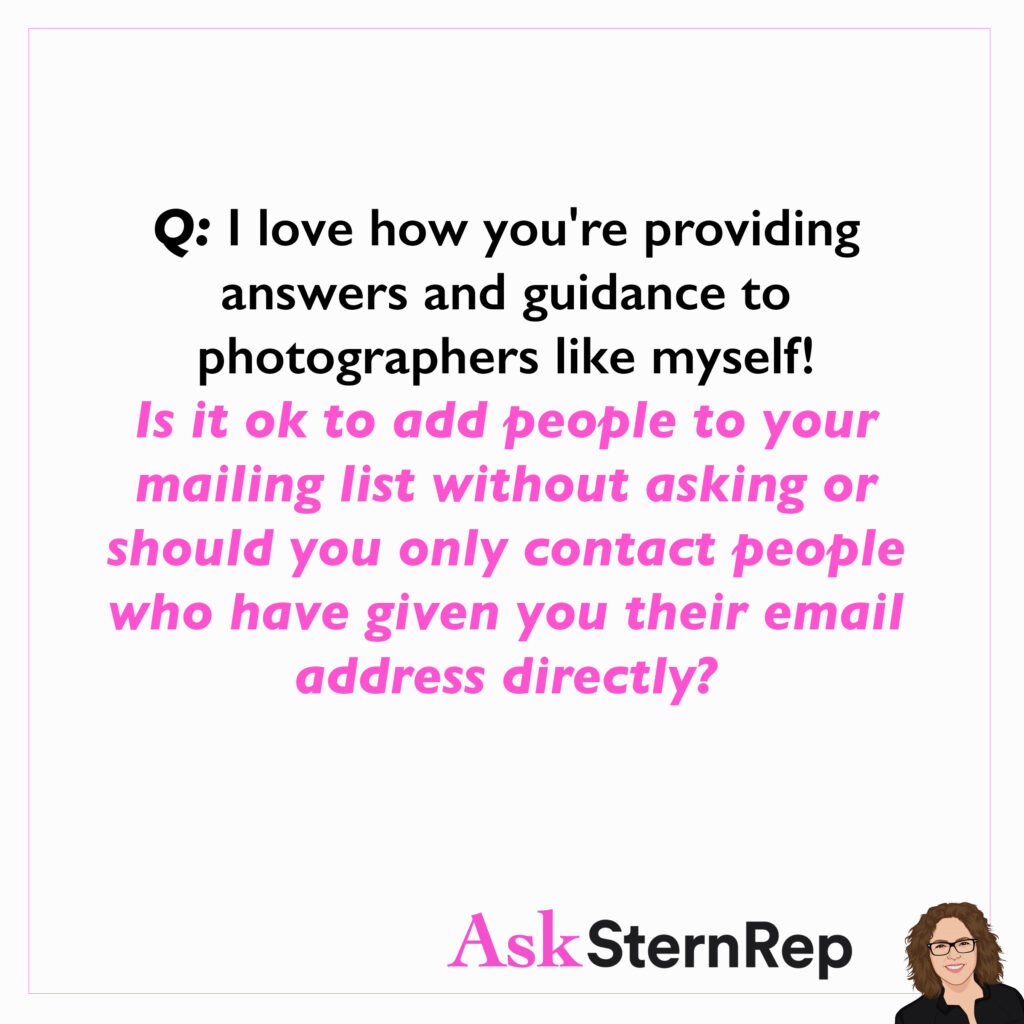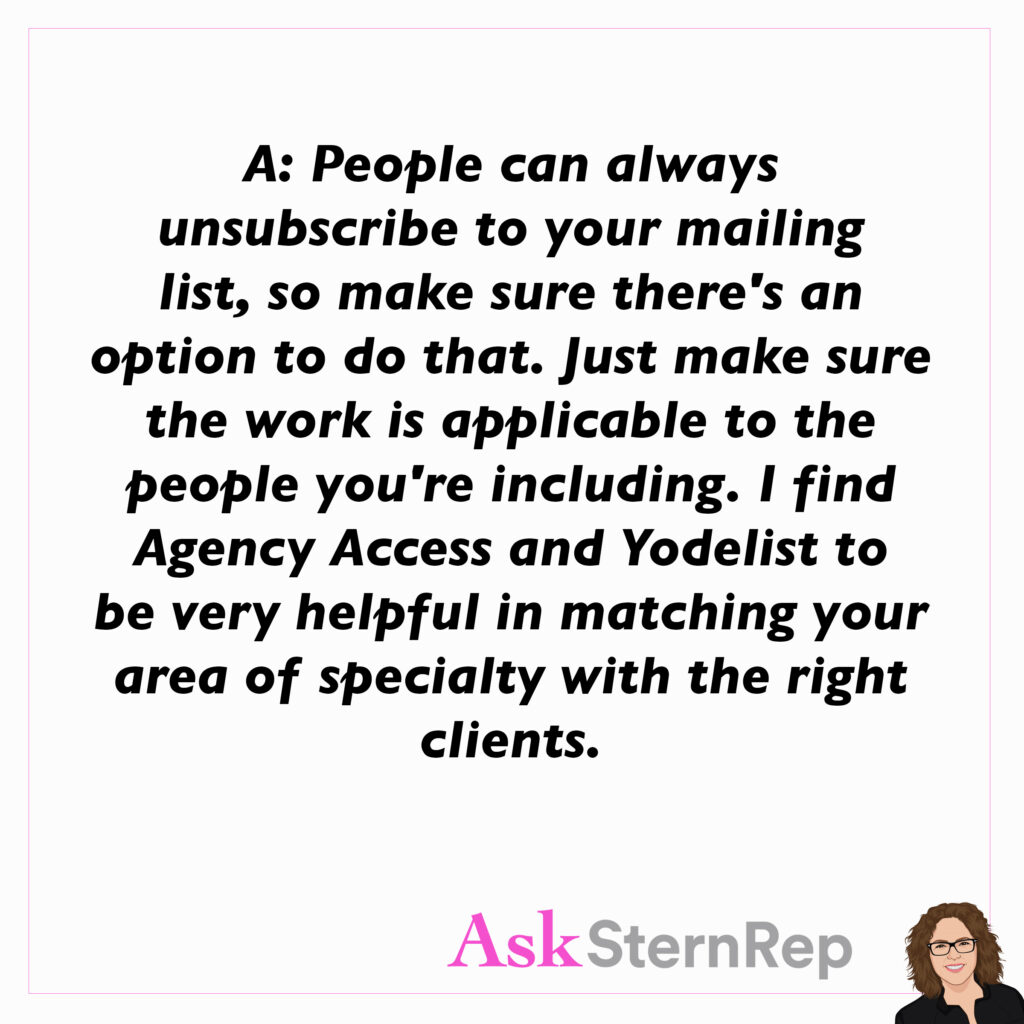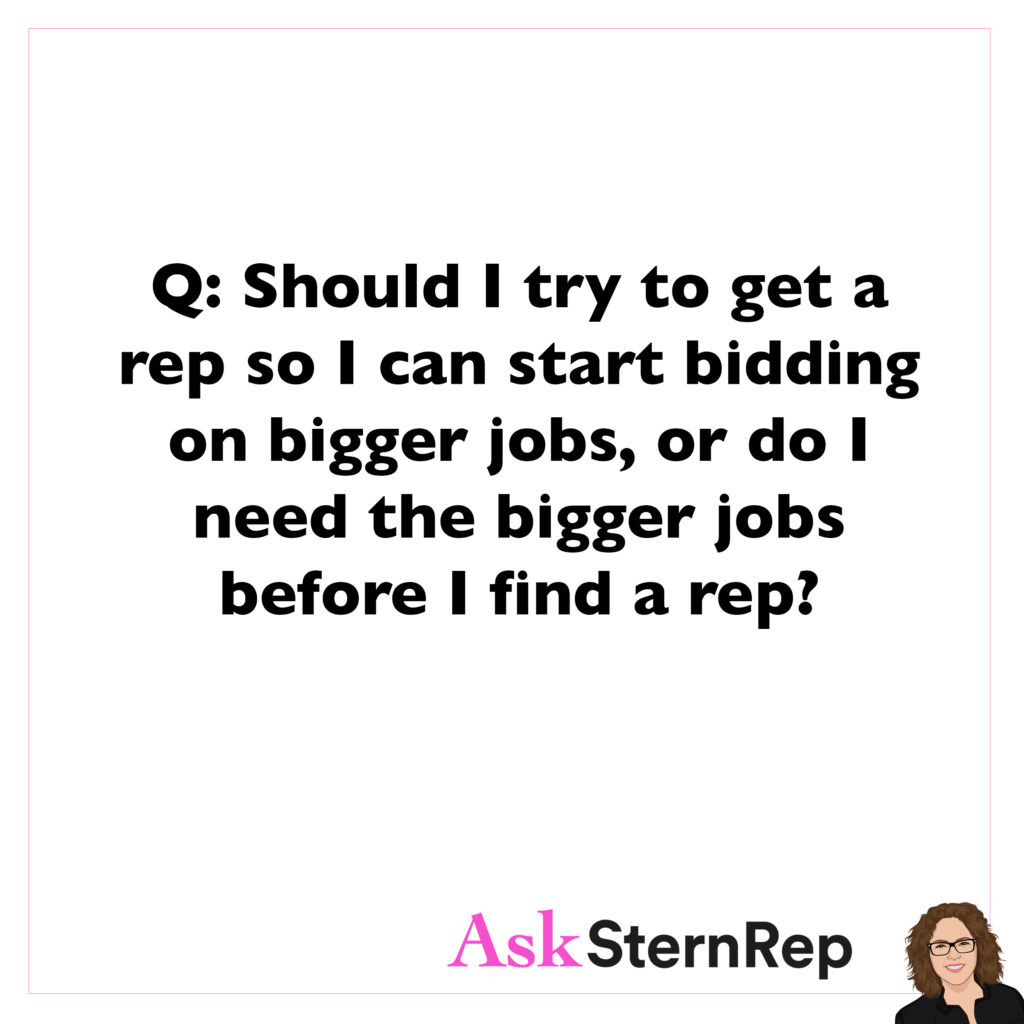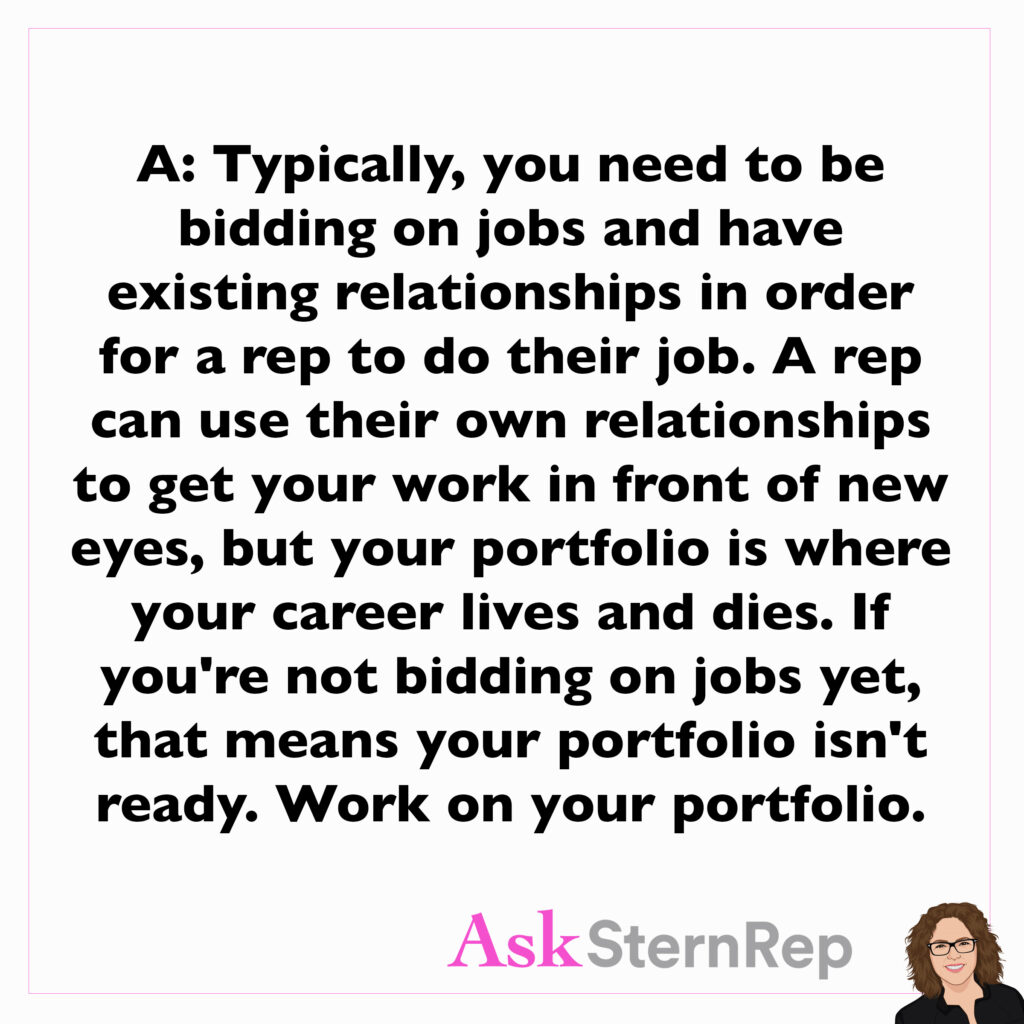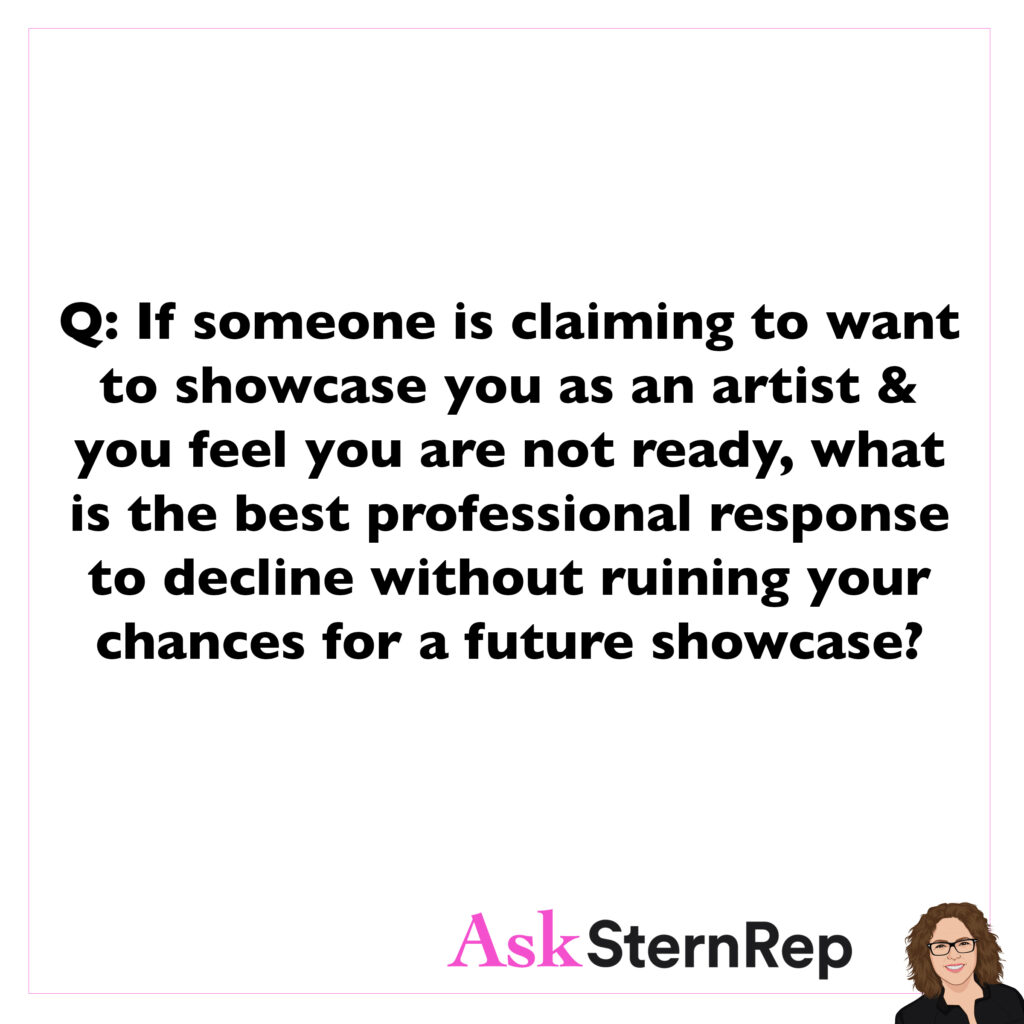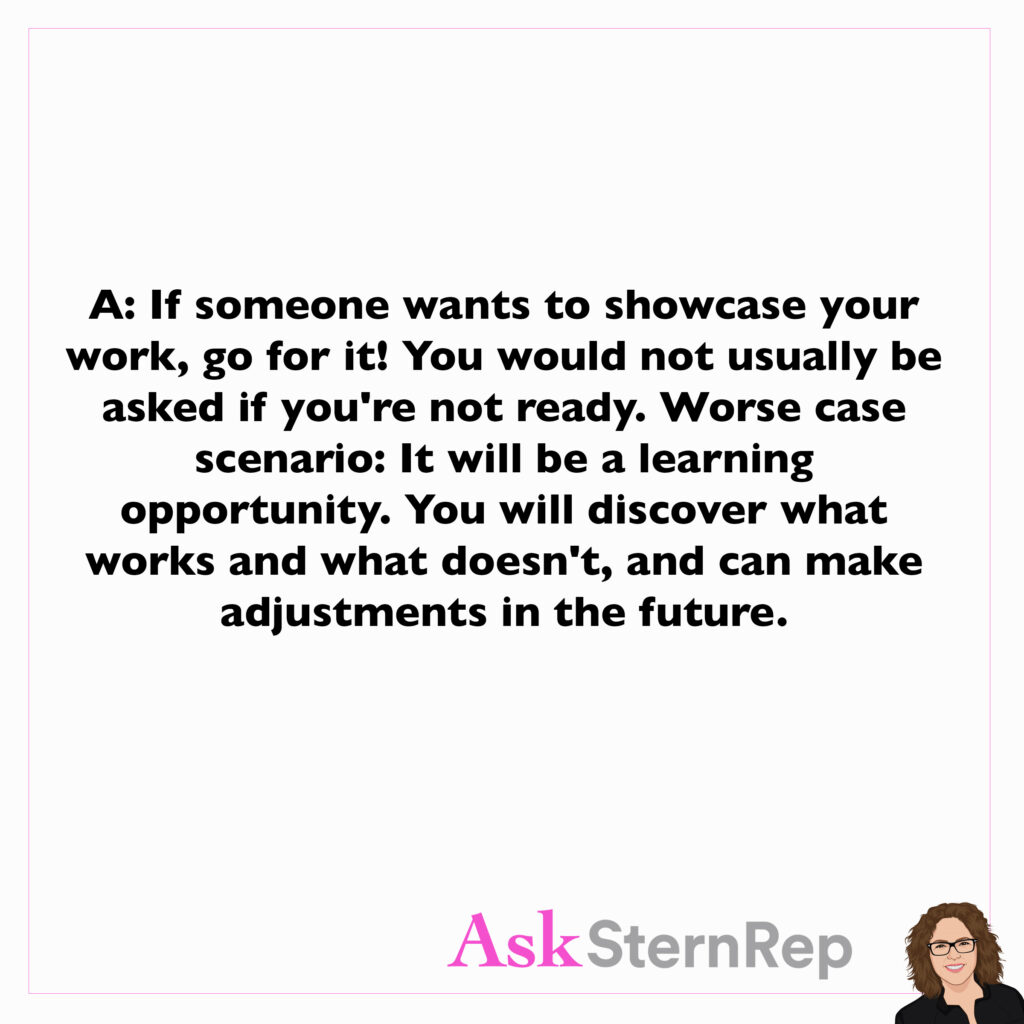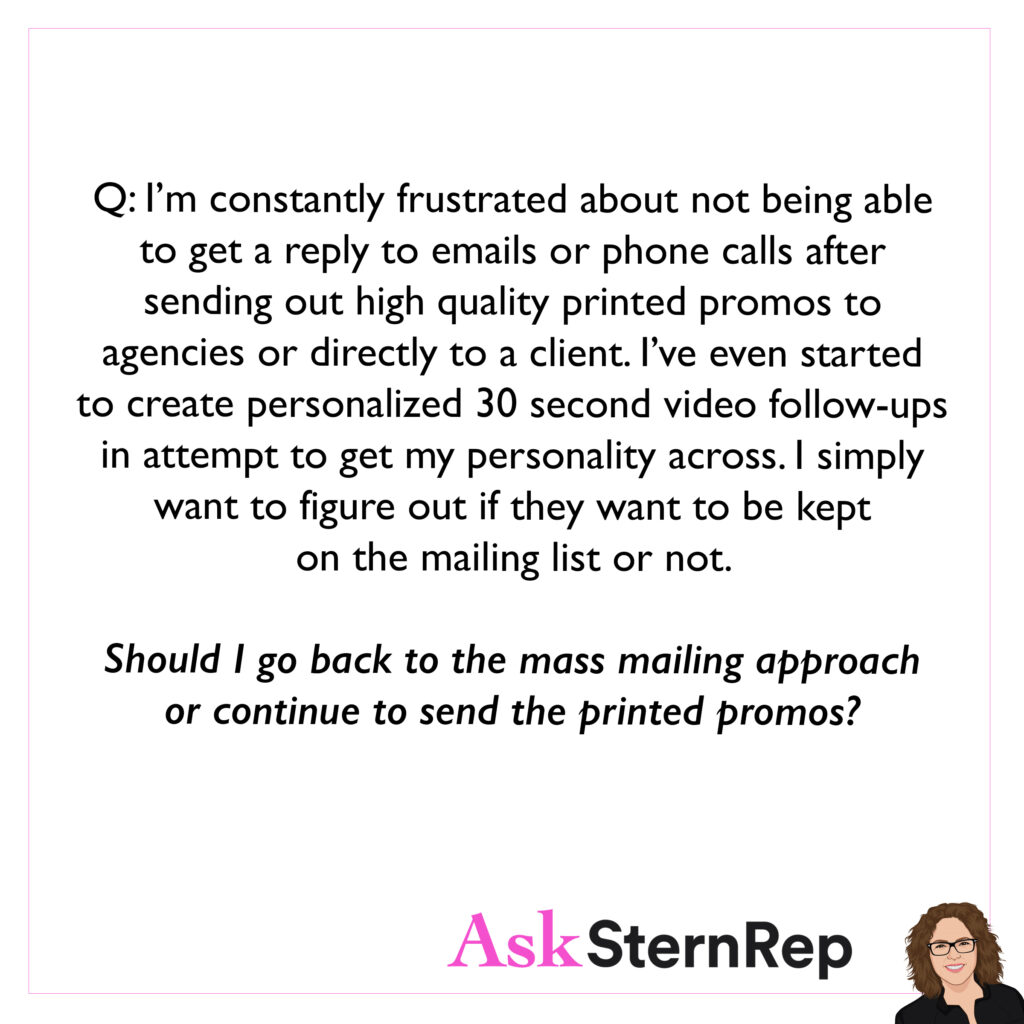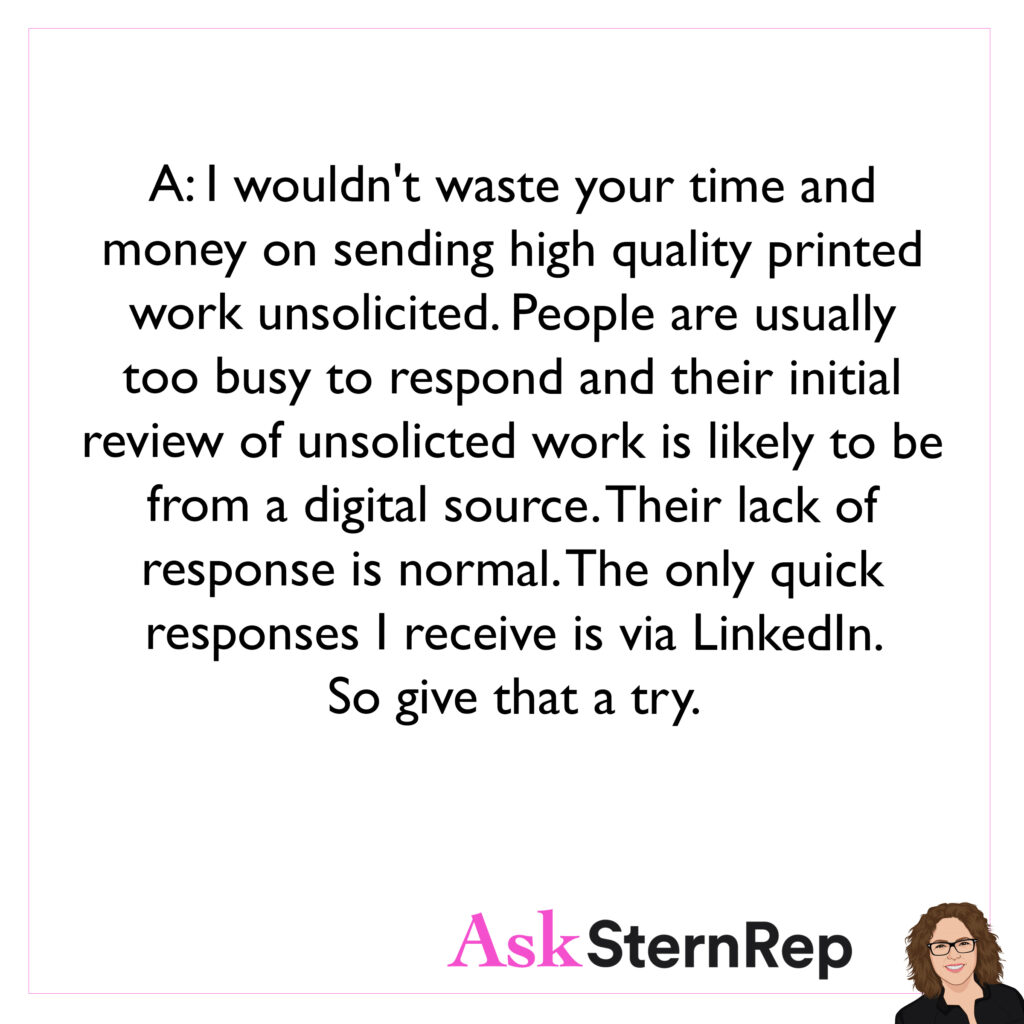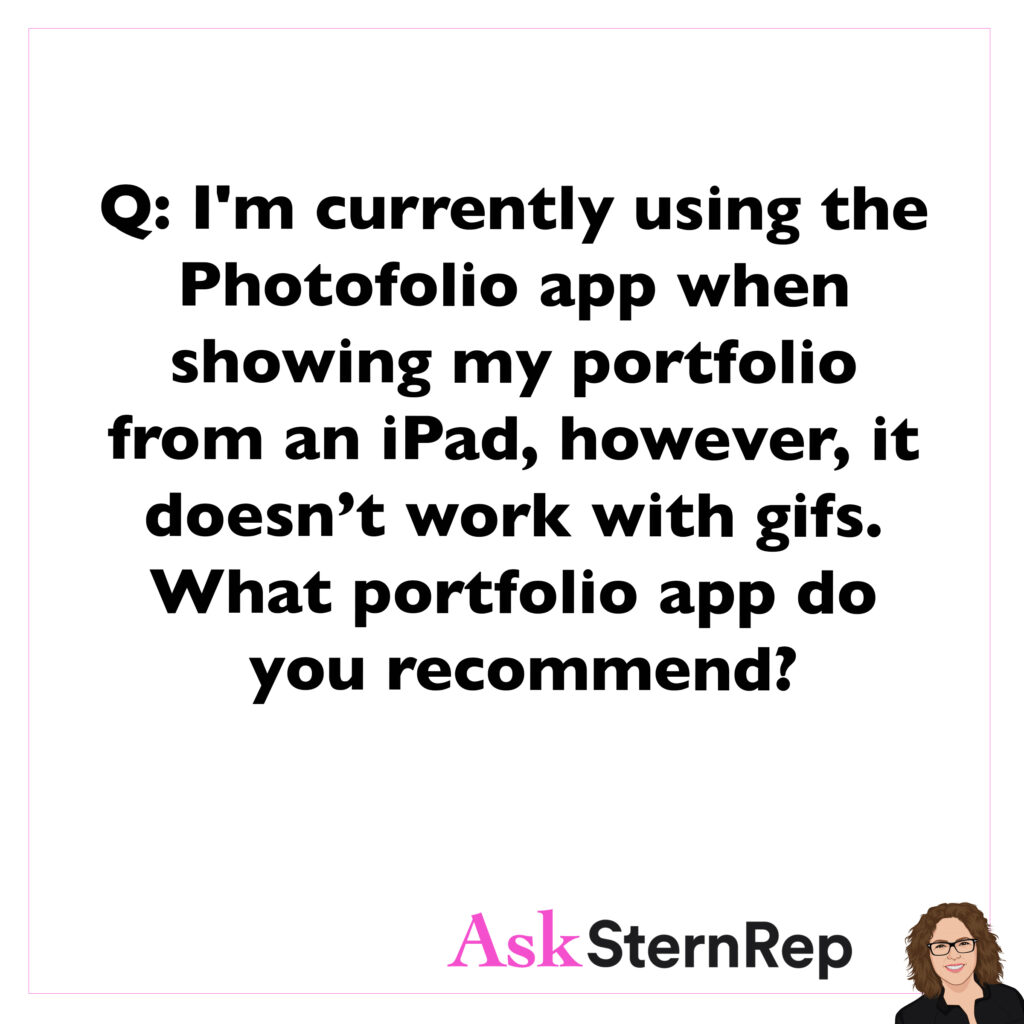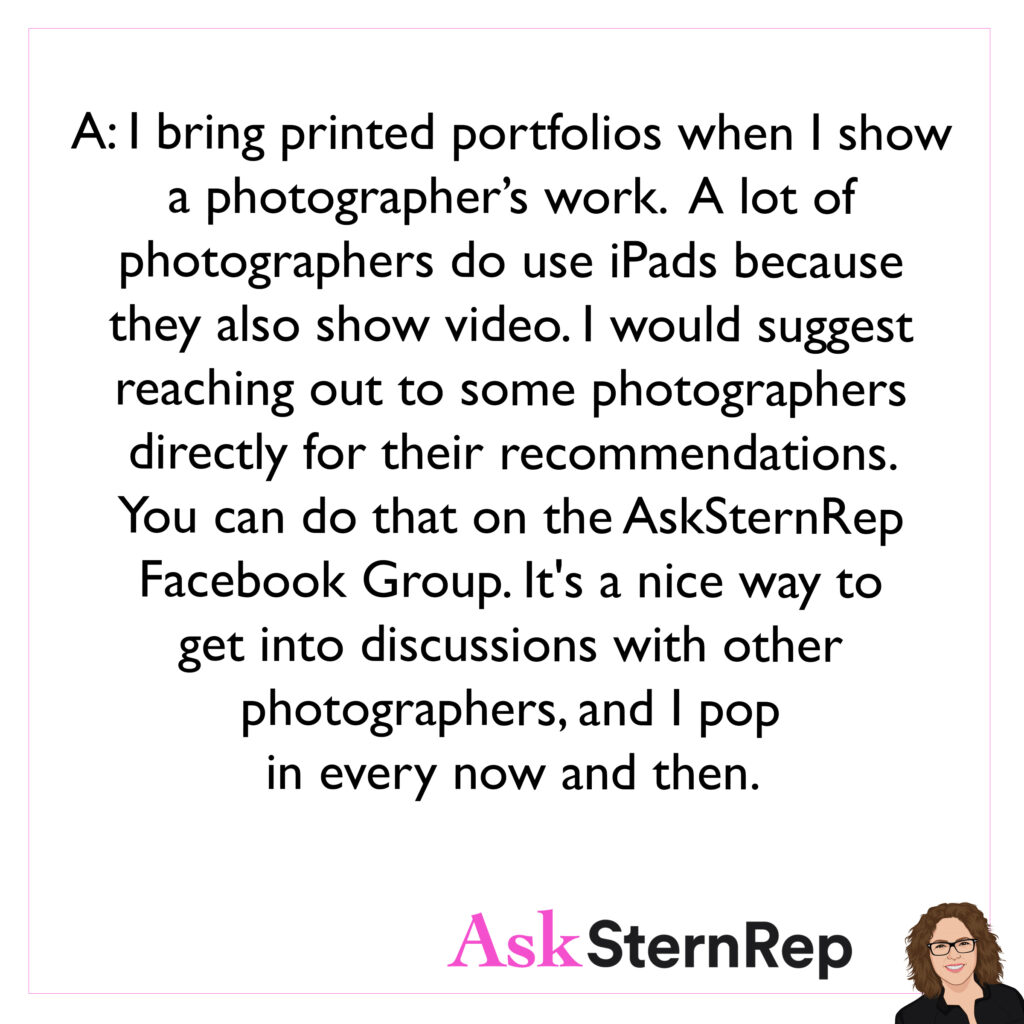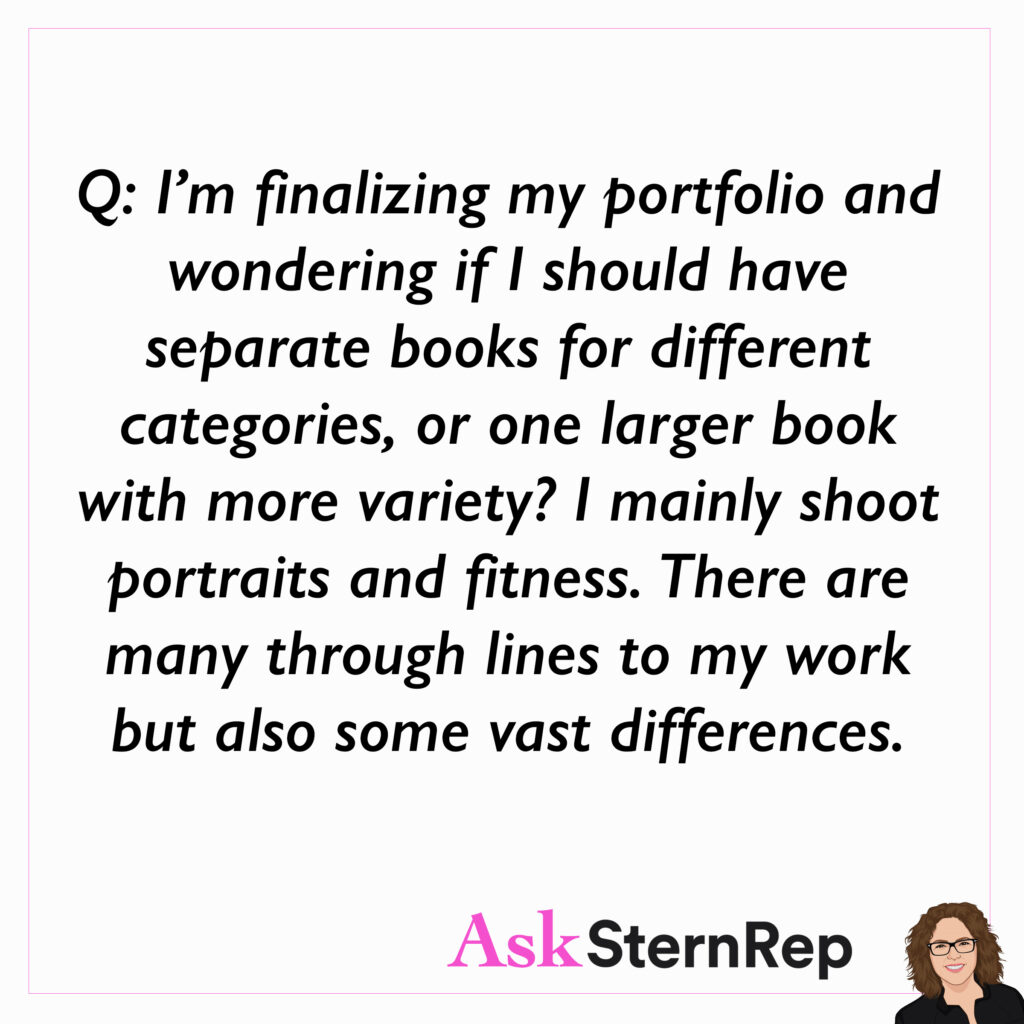
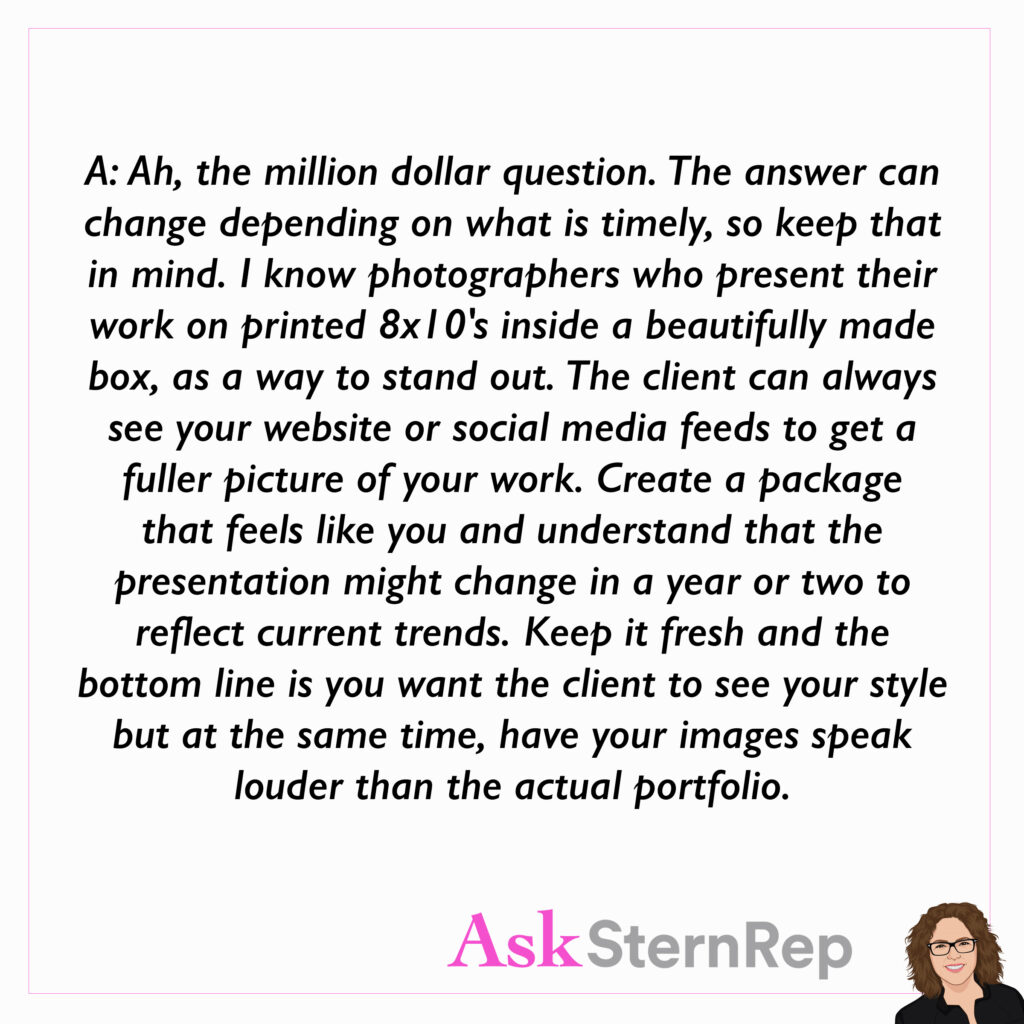
Q:
I’m finalizing my portfolio and wondering if I should have separate books for different categories, or one larger book with more variety? I mainly shoot portraits and fitness. There are many through lines to my work but also some vast differences.
A:
Ah, the million dollar question. The answer can change depending on what is timely, so keep that in mind. I know photographers who present their work on printed 8x10s inside a beautifully made box, as a way to stand out. The client can always see your website or social media feeds to get a fuller picture of your work. Create a package that feels like you and understand that the presentation might change in a year or two to reflect current trends. Keep it fresh and the bottom line is you want the client to see your style but at the same time, have your images speak louder than the actual portfolio.

